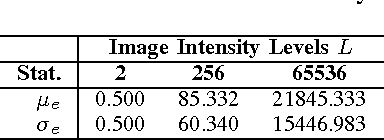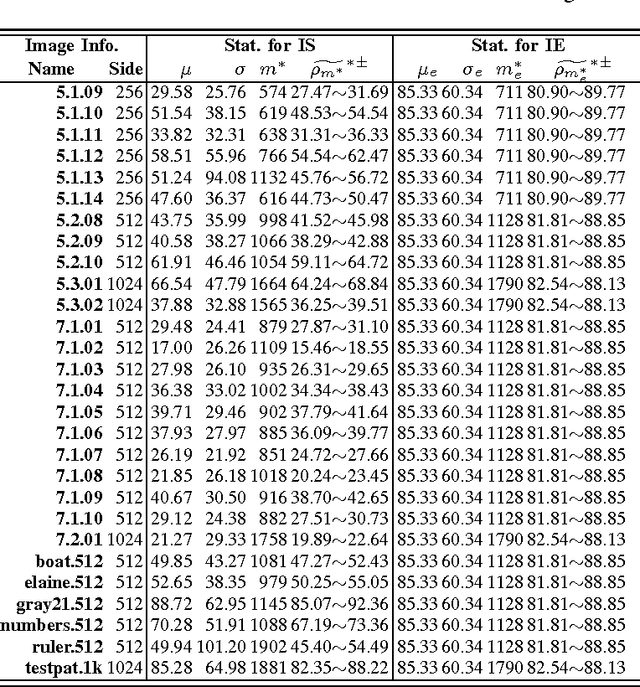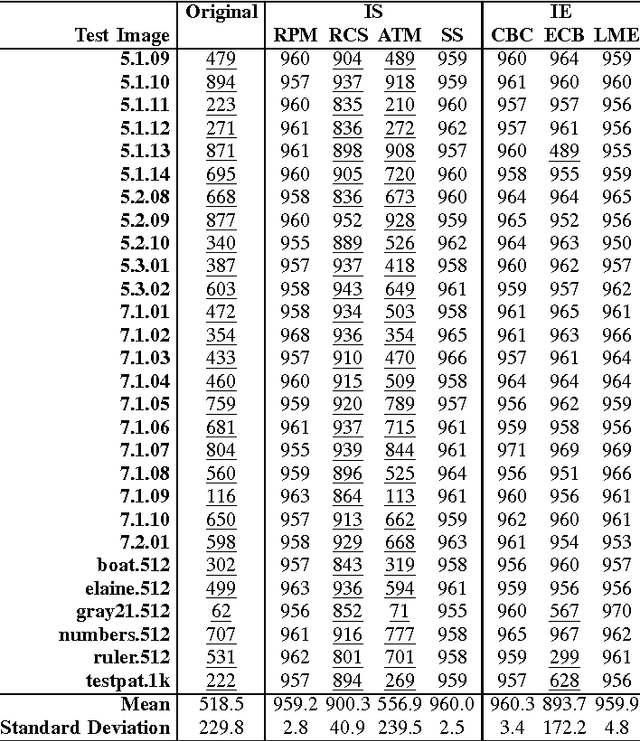A New Randomness Evaluation Method with Applications to Image Shuffling and Encryption
Paper and Code
Nov 07, 2012



This letter discusses the problem of testing the degree of randomness within an image, particularly for a shuffled or encrypted image. Its key contributions are: 1) a mathematical model of perfectly shuffled images; 2) the derivation of the theoretical distribution of pixel differences; 3) a new $Z$-test based approach to differentiate whether or not a test image is perfectly shuffled; and 4) a randomized algorithm to unbiasedly evaluate the degree of randomness within a given image. Simulation results show that the proposed method is robust and effective in evaluating the degree of randomness within an image, and may often be more suitable for image applications than commonly used testing schemes designed for binary data like NIST 800-22. The developed method may be also useful as a first step in determining whether or not a shuffling or encryption scheme is suitable for a particular cryptographic application.
 Add to Chrome
Add to Chrome Add to Firefox
Add to Firefox Add to Edge
Add to Edge